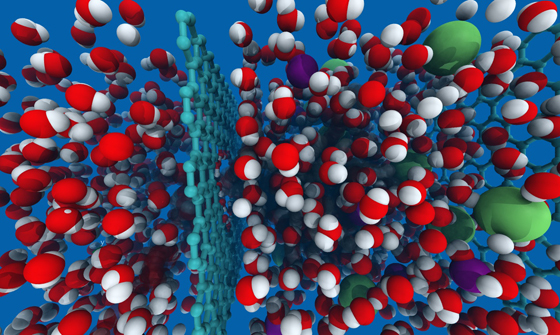

Once punctured by wayward metal atoms, the wonder material graphene can stitch itself back together, healing over with a new patch of two-dimensional carbon atoms. This new finding sheds more light on the strange properties of graphene, and it could even lead to new graphene creation strategies.
Graphene is an atom-thick layer of bonded carbon atoms, and as we’ve seen time and again, it has several special electrical and chemical abilities that place it at the center of future technologies. But it’s a tricky beast. It can’t be arranged simply in a lab — it must be grown just so — and it’s highly reactive with other compounds, including itself. It readily curls up into a cylinder, forming the carbon nanotubes of so many nanoscale experiments. This means it’s difficult to produce graphene in large quantities, as Technology Review’s arXiv blog notes.
But ripping a hole in it and letting the graphene fix itself could be one new trick. The graphene sheet just needs a supply of loose carbon atoms it can use to form the patch.
Konstantin Novoselov at the University of Manchester and colleagues — who, by the way, are joint recipients of the Nobel Prize in 2010 for graphene — used a beam of electrons to etch some holes into a graphene sheet. They doped the hole with palladium and nickel atoms, which ensure that the hole will form (electrons alone would not be enough, for atomic reasons we won’t get into here). They added still more transition-metal atoms to make the hole bigger, and took images of the injured graphene sheet using an electron microscope.
If there were some extra carbon atoms around, the graphene sheet would snatch them up and use them to displace the metal atoms, forming new carbon-carbon bonds at the hole. If the carbon exists in hydrocarbon form — a compound of hydrogen and carbon — then the patch won’t be perfect. But if the atoms are pure free carbon, the graphene will stitch itself together by forming more pure graphene.
The last finding is important for future graphene growth, because it suggests that the shape and size of graphene sheets can be controlled with foreign metals and a free-carbon reservoir. Plus it’s interesting to know that graphene, along with all its other strange and useful properties, can heal itself.
Novoselov and colleagues posted a manuscript describing this work on the arXiv preprint server.
[via Technology Review]







